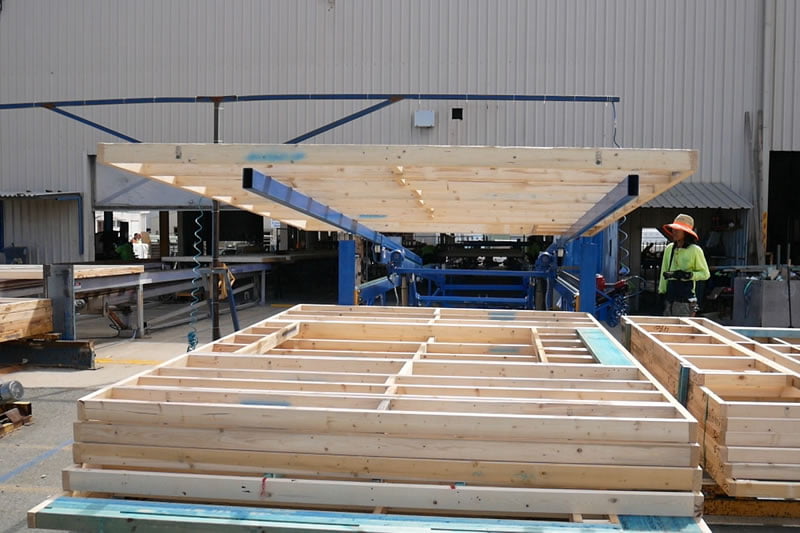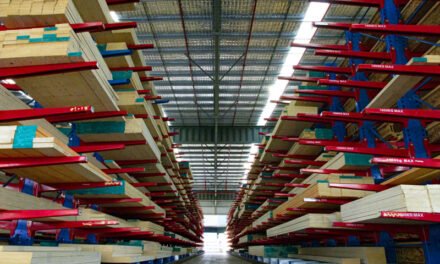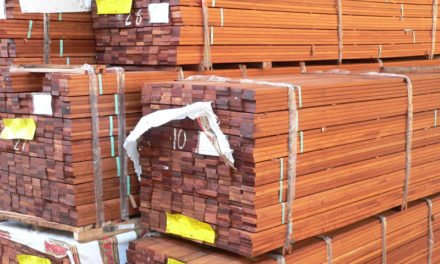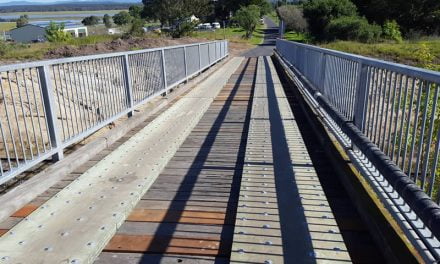As part of our ask the experts series, Ed Serrano talks about machinery that fits customers’ needs.
Ed Serrano, managing director of Vekta Advanced Automation, likes to sit down with potential customers to talk about what they do before he discusses what he can do for them. “I’m an engineer, not a salesman, so I’m about finding the solutions to solve their problems,” he says.
As a young graduate, Serrano saw machinery firms being more focused on what they wanted to sell than on what the customer needed to improve their workflows and productivity, When he founded Vekta, he chose a different path for the way they did business – one that starts with a fundamental question that can help every business.
“I ask them what they’re trying to achieve,” Serrano says. “A lot of our customers come to us first to talk about a new saw. Some sites say they have a bottleneck with cutting and they just want to achieve more.
“Other sites say they’re trying to value-add for their customers, they want to one-up their competitors. Another common one is trying to reduce their reliance on staff. We look at different options for each of these. For anyone looking to invest in machinery, the first thing I would say is base your talks to the manufacturers on: ‘this is the problem I’ve got, what would you recommend?’ And then see what sort of flexibility they offer in return. Are they trying to sell you the same system they put into every other plant? Or are they customising it for your particular operation?”
Meeting needs
Customisation is a key part of the Vekta offer. Based around two core saws, the Razer S5 and Razer V5, which have different specialities depending on whether a firm is a truss specialist or has a wider output, the brand offers a wide range of automation products, including lifters, infeeds, outfeed kickoff systems, printers and more.
All are designed to be backwards-compatible, so for people who start with a saw, the peripherals can be integrated at later stages as needs require. Serrano encourages a cautious approach to infrastructure investment in most cases. “As your company grows and your demand and productivity requirements change, you can upgrade your system step by step and keep your machines running at pace with what your company actually requires at each point in time, rather than taking a big leap of faith and over-capitalising in the hope that things really pick up for you once you’ve removed bottlenecks in your production,” he says.
“It’s a much safer, less risky approach if you’re not certain about the next few years – especially when we’re in an uncertain period like this – and it doesn’t cost much more to upgrade in the future. It lets you step through the stages of growth, which helps keep the investment relevant for much longer than if you bought a whole system upfront, hoping it would be relevant in the future. And that’s not just over-investment, it’s very possible to surpass your expectations. We see companies that have to buy multiple saws because they’ve run out of growth potential with that one particular product. Look for flexibility, for something that can grow with you.”
That flexibility doesn’t just come from the hardware. Software and maintenance also matter. As part of the discussions Serrano has with potential clients, he asks them to describe their workflow and reporting, and those details are used to refine the machines and systems that Vekta delivers.
“Some saws come with a default optimisation that may not suit your company: how you’re used to cutting and how you’re used to operating, for example,” Serrano warns. “Customers often don’t talk about details such as how easy it is to do recuts, what options do I have to look at my statistics? Where can the work be optimised? Does it have to be done at the saw or can I do it from the office?
“All these sorts of questions about the saw, the software and the system and how it can be adapted to that particular customer are almost always lost. Every single plant that I’ve gone into will operate differently in some way, shape or form. That’s an area that deserves more attention.”
The next stages
Unlike many machinery companies that tend to specialise in one sector of the cutting market, Vekta’s customer base ranges from small family businesses to large, fully automated solutions that produce fully assembled trusses, with multiple automatic kickoffs going to different jigs.
Large plants still have the same concerns as small ones with respect to needing a close link between machinery and operations, but require even more customisation. Serrano says, “When you start to spend that sort of money, you want someone that can help write new software or create new pieces of machinery that are going to help the overall flows of your system. A one-size-fits-all approach to equipment rarely works in these situations. You almost always end up spending more money than you need for what you’re trying to achieve, or you get something that you have to adapt to and fiddle around with.”
With advances such as multi-station kickoffs, automatic stacking of trusses and automatic nailing systems coming out in increasing numbers, Serrano says there’s a lot of interest. “But that opens up a whole new realm of how do you maximise the benefits? How do you synchronise your cutting solutions and get your outfeeds working to maximise that productivity? This is the area that really deserves to have specialist engineers working on it, and you need to have direct contacts so that you can deal directly with them.”
Vekta has worked with many customers as they move through these steps of increasing sophistication and the company’s approach has been to make the process as simple and as cost-effective as possible. For example, an automatic stacking and flipping (for crowing the timber) system can be added to a typical Razer infeed by simply clamping onto the existing infeed transfer legs. A packfeeder is designed to be installed right at the end of a normal infeed system – no need to replace anything. Even the size of the packfeeder was considered when looking at how easily it could be applied as an upgrade to an existing system. Upgrading to a P3 print system for printing nail plate outlines and a whole range of other detail is achieved primarily by bolting the new printer to the side of the saw.
When it comes to handling the cut components, Vekta’s expansion from the existing kickoff system offers a choice of either straight to the jigs or to multiple traditional kickoff locations – so customers can optimise over more or different types of batches. All upgrades can happen after the initial purchase, regardless of what level the system starts from.
The same approach informs all Vekta’s machinery. Vekta’s Smart Roller Conveyor system for handling completed trusses is about the same price as a traditional truss roller system. However, it’s specifically designed to allow for considerable flexibility and upgradability. A Stakpro Truss stacking system can easily be added and then fully integrated with the intelligent truss conveyor system. Truss transfers can also be added to the line for handling finished stacks of trusses. Upgrade kits are available for stacking automatically.
Vekta’s focus has been on creating products and systems that will allow a business to grow and change without the need to continuously change automation practices or suppliers. Far too often, sites are stuck with a particular system for the life of the equipment. Or, alternatively, they are forced to sell equipment before they can upgrade.
Instead of an industry standard 5-year operational life for their core saws, Serrano believes major pieces of machinery should provide a much longer working life. “Airplanes will go for 50-60 years before they hit their end of life because as machines they’re designed so they can be maintained and updated. We have a saw that’s used heavily every day and it’s 16 years old.
“One of the main reasons saws become obsolete is because computers evolve so quickly that the technology that was used in these machines is obsolete and you can’t get parts for them. But instead of making our old ranges obsolete, when we design new features, we make certain that they’re backwards compatible. So even though that 16-year-old saw’s original motor is now discontinued, there’s an on-the-shelf solution to solve that. You might need to replace the drive and the cable as well, but it means that your machine is still relevant and all the upgrades can still be applied to it, all the software can still be applied to it and you can get it up and running again without having to fork over a whole lot of money for a new machine.”
Keeping it going
Serrano points out there are multiple quality suppliers of machinery operating in the Australian market – he has on occasion sent clients to his competitors when he thinks they will offer a better fit on a piece of equipment for that client’s needs – but he cautions that as complexity within your operation grows, there is a case for trying to minimise the number of suppliers in a production line.
“You can have multiple brand systems that are all designed to work together, but you run the risk of having a situation where there’s a problem and instead of a quick resolution, there’s a round of ‘no, actually the problem’s at that end’” he says.
“Whereas if you minimise the number of suppliers, there’s only one or two people who can be responsible for the problems, and it’s much easier to find solutions.”
For plants operating at the higher levels of automation, many have on-site engineering support or other experts who are able to deal quickly with any issues that arise and thus keep down-time to a minimum.
“If you don’t have that sort of in-house expertise yet your plant relies on automation, you want to make certain that you have ready access to the engineers and the suppliers and so on. And not just the skill sets but also all the documentation, the written procedures and drawings and so forth to help you do your job,” says Serrano. “Because when an entire company is based on heavily automated solutions, when the system slows down for 15 minutes, it can have huge effects and there are not huge buffers in the schedule.”
As a West Australian-based supplier with a national team plus International team in New Zealand and the USA, most time zones are covered in real-time by Vekta’s engineers. “It’s really important that you have these in-house or local capabilities that can go into these issues to the nth degree and help solve the problem,” Serrano says, “because you need to be talking to someone who has detailed knowledge and access to the actual software, firmware and electronics so when you do get these unusual stoppages, you can dive in quickly and efficiently to find the cause.
“Before you even place an order for automated equipment, I would recommend you make certain you have access to the actual engineers.” For more, visit vekta.com.au
Image: The Vekta StakPro Frame can handle panels up to 6m in length and is designed to adapt smoothly to varying automation levels. Photo Courtesy Vekta Advanced Automation












